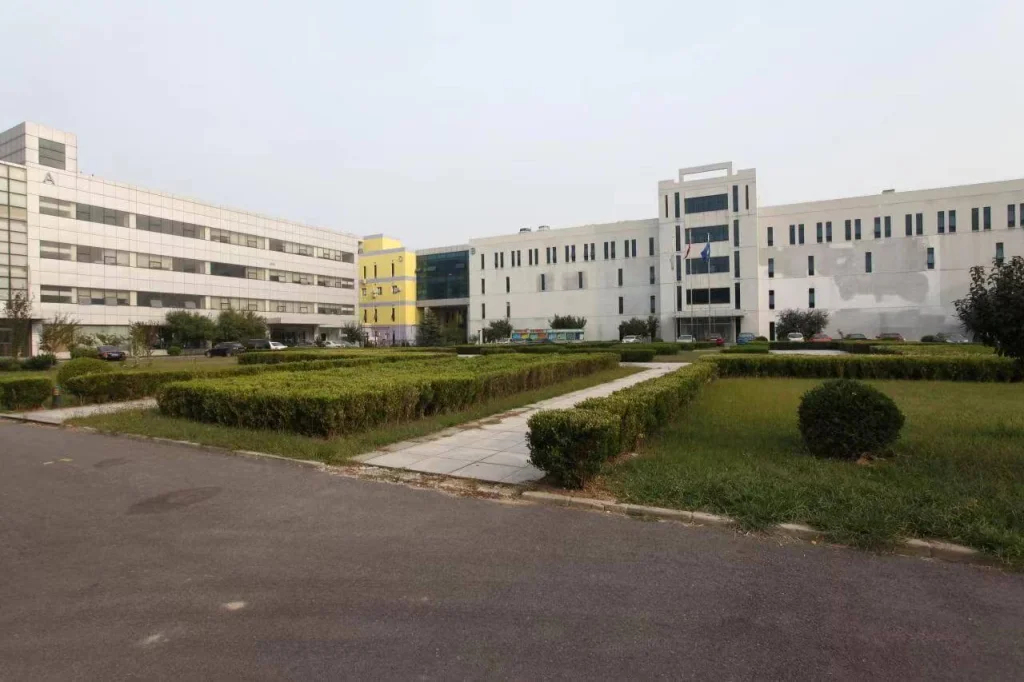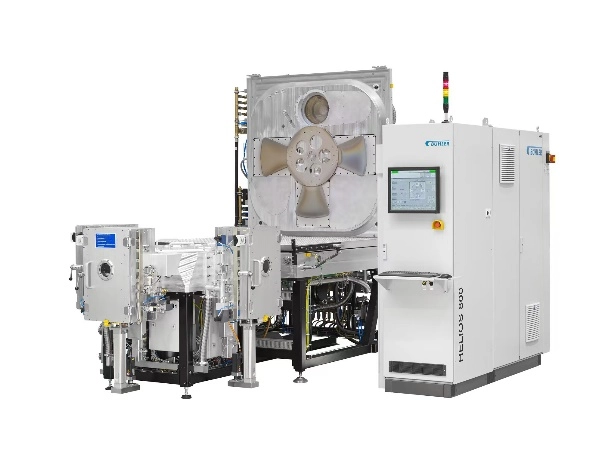Detecting CO₂ gas accurately is crucial in industries like healthcare and environmental protection for maintaining operational efficiency and safety standards. It’s essential, in healthcare, to monitor CO₂ levels for assessing patients’ ventilation status. In environmental protection, industries use CO₂ sensors to track greenhouse gas emissions and comply with regulations to reduce their carbon footprint.
Ensuring compliance with regulations is important not for legal reasons, but also safety concerns when it comes to detecting CO₂ levels accurately to prevent dangerous situations from occurring in places, like factories or warehouses where high levels of CO₂ could pose health risks like suffocation or other safety hazards. Beijing Bodian Optical Technology Co., Ltd. having infrared filters tailored for sensors, enabling more precise performance. When combined with a reliable monitoring system, these filters can issue early warnings before potential dangers occur, thus offering significant assistance.
Challenges in Achieving Precision in CO₂ Gas Detection
Detecting CO₂ gas with precision is quite a challenge, as environmental aspects, like temperature changes and moisture levels, can impact sensor results, causing inaccuracies. Additionally,y sensors often react to different gases, which can lead to incorrect readings.s
There’s another issue when it comes to adjusting sensors; as time passes by and sensors are exposed to conditions or contaminants degrade their components and they need to be re-calibrated often to stay accurate. Choosing the materials for sensor components is crucial too. For example using infrared filters made specifically for CO₂ detection can really improve performance by reducing interference, from other wavelengths.
How Do Infrared Filters of Beijing Bodian Improve CO₂ Detection?
Principles Behind Infrared Filters and Gas Sensing
In gas sensing technology, Infrared filters play a role as they can pinpoint certain wavelengths linked to gas absorption bands effectively. The core idea behind their functioning is the passage of infrared light that matches the absorption features of the particular gas being targeted. For instance, CO₂.
Infrared filters are part of components that’d sensitive to infrared features and their “tiny lenses” hold valuable insights, in them.Indicatively designed with optical principles and crafted with precision using automated methods.These filters are engineered to pinpoint the absorption spectrum of CO₂ molecules mostly at approximately 4.26 micrometers.This unique feature allows sensors to identify low levels of the gas with great accuracy.
Key Features That Enhance the Performance of Infrared Filters
In gas detection applications, the improved effectiveness of filters can be attributed to various factors.
Narrowband Transmission: Narrowband infrared filters allow only a specific range of wavelengths to pass through while blocking others. This feature minimizes interference from other gases or environmental noise.
Durability: The infrared filters deeply apply the principles of infrared optics, having undergone repeated research and precise design. They are matched with suitable infrared materials and coated through a sophisticated process, enabling them to maintain stable performance without degradation in harsh industrial environments..
Anti-Reflection Coatings: Advanced coatings reduce reflection losses and enhance light transmission efficiency, improving the overall sensitivity of the sensor system.
Thermal Stability: High-quality infrared filters maintain their optical properties across a wide temperature range, ensuring consistent performance under varying conditions.
Lately, our organization has created a range of infrared filters including infrared narrowband filters and infrared broadband filters, among others to meet the needs of various industries like gas detection, with customized solutions.
What Are the Selection Criteria for Infrared Filters in CO₂ Detection?
Spectral Range and Its Importance for CO₂ Absorption Bands
When choosing a filter for detecting CO₂ gas in the mid infrared region (around 4–5 micrometers) the spectral range plays a crucial role in selection criteria. In the near ultraviolet spectrum where a variety of glass filters exist to address common issues primarily which might arise. Nevertheless when it comes to identifying gases like CO₂, in the infrared range more specialized multilayered designs are usually necessary.
The filters need to line up with the intense absorption peaks of CO₂ molecules at 4,26 micrometers while also blocking out nearby wavelengths that might cause interference or affect the accuracy of measurements.This can be achieved in designs by using multiple layers or a combination of materials to maintain this level of specificity without sacrificing transmission efficiency.
Durability and Environmental Resistance of Infrared Filters
In settings where sensors are often subjected to harsh conditions like high temperatures or corrosive materials a critical factor to consider is durability.Environmental sensors used in areas, like conservation rely on this principle to perform their functions effectively.
High-quality infrared filters are manufactured using materials capable of withstanding high temperatures and chemical abrasion/wear.
Furthermore, caring for the environment ensures that equipment remains dependable over time and lowers maintenance expenses by reducing the need for reconciliation or replacements—a key factor to keep in mind for tasks that involve ongoing monition, over extended periods.
In industries, infrared filters play a crucial role in improving the accuracy and dependability of CO₂ gas detection systems by meeting specific requirement,such as aligning with absorption bands and ensuring strong durability.
How Can You Optimize Your System with Advanced Optical Solutions?
The Role of Customization in Matching Specific Application Needs
Customizing systems is crucial for optimizing them for use in various fields, such as gas sensing technology, where specialized optical solutions like infrared filters are essential for ensuring precision and dependability in measurements. Infrared filters are considered vital components sensitive to features, and their intricate design reflects a wealth of knowledge and expertise aimed at meeting the diverse requirements of industrial and scientific settings.
For example in detecting CO2 gas using filters is carefully customized to match the absorption spectrum of CO2 molecules precisely by creating filters with specific transmission properties that only permit certain wavelengths. Usually around 4 26 micrometers. To pass through while obstructing the rest to reduce interference, from other gases or background noise and improve measurement precision.
Furthermore tailored solutions go beyond aligning spectra to encompass durability and resistance to factors. Filters are fabricated by applying suitable infrared coating materials onto the substrate and then employing exquisite coating techniques to endure environments like extreme heat, humidity or contact, with corrosive agents. This personalized approach not enhances efficiency but also prolongs the systems lifespan of operation.
Integrating High-Quality Components for Enhanced System Efficiency
Another key aspect of optimizing the system is the incorporation of notch optical elements like infrared filters, which are manufactured using advanced methods to guarantee steady performance and dependability. They are intricately designed based on the principles of optics, with thorough research and meticulous planning involving multiple layers and a combination of materials to improve their effectiveness in filtering and transmitting light.
Top notch parts also play a role in ensuring temperatures within a system when faced with different environmental settings. An important aspect for maintaining efficiency levels intact. Filters that use cutting edge reflection coatings can minimize reflection losses and enhance light transmission in infrared setups; this results in heightened sensitivity and precision, for gas sensors.
Furthermore incorporating these elements into detection systems makes it easier to maintain them. This reduces the frequency of reconciliation or replacement caused by wear and tear resulting in lower operational expenses and long term dependability of top notch optical solutions.
The advantages of using reconstructed coatings for CO₂ filters include enhancing transmission with better anti glare features and increasing resistance, to environmental harm while improving the overall efficiency of the filter system.
Hybrid materials enhance the detection of CO₂ by using inorganic compounds that create thinner and more precise filters to target specific CO₂ absorption bands defective. This leads to increased accuracy while also reducing the size and cost of the system.”
New infrared materials play a role in enhancing gas detection capabilities due to their ability to improve light absorption for CO₂ with the use of advanced filters, like tailored shortwave pass filters, which ultimately enhance the sensitivity and reliability of industrial monitoring systems



